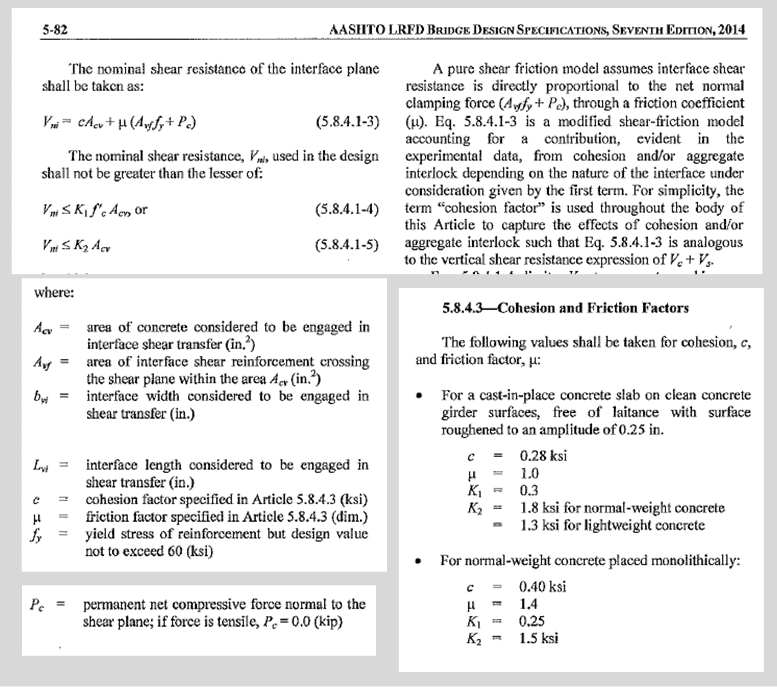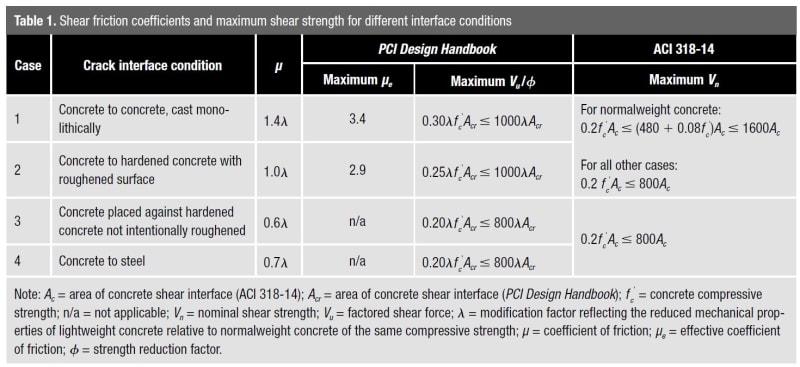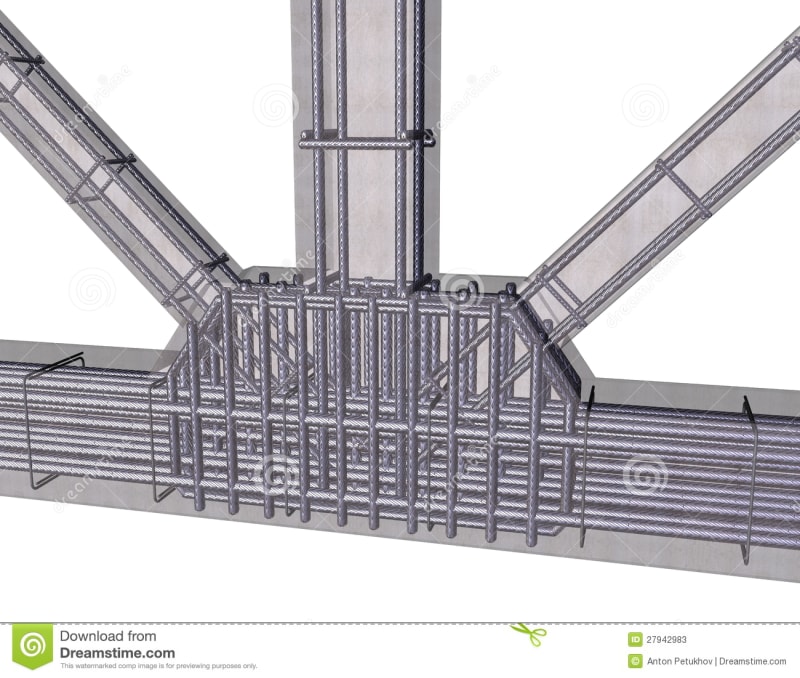FortyYearsExperience said:
minimum steel to tie A to B = 1.45E3 [kips]/53 [kips/sqin] = 27 sqin
Just to clarify for me: This is 27 sqin cross section of the rebar that should be placed perpendicular to the shear interface, right? That being the horizontal shear plane depicted in my 13 May 19 22:48 post ([Part 2] Now for the 11/12/deck analysis from UCPP_Final_Calculations_Superstructure (1).pdf page 1388.), right? If so, I'd like to understand this formula.
The shear interface has to connect the horizontal northward component of the member 11 axial force ultimately to the southward tension of the deck's tension rods. But being perpendicular to those two main forces, that steel is not directly in tension, but rather it would be in tension as a result of the interface trying to separate by the two faces "riding up" over the interlocking bumps and valleys.
So the calculation that involves the main force (your 1.45E3 kips) and the tensile strength of rebar (your 53 kips/sq in) would involve a factor to account for the riding-up mechanism. So I
thought (but await your confirmation) that you are using:
Vn = X ( Avf * fy) or solving for minimum steel area: Avf = (1/X) * (Required Vn) / fy
Where:
[ul]
[li]Avf: Area of rebar [sq in], to be found[/li]
[li]Required Vn: 1.45E3 [kips][/li]
[li]fy: 53 [kips/sqin][/li]
[li]X = either mu, or mu * lambda, where various tables show mu and lambda both having values of about 1.[/li]
[/ul]
In short, I'm trying to understand whether you are effectively using the same formula as FIGG, but using only the Avf * fy the term, and assuming X=1, or whether you are using something completely different, or even looking at a different shear plane.



